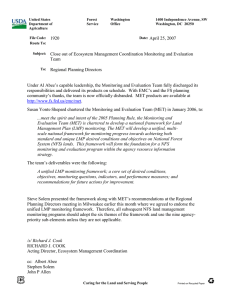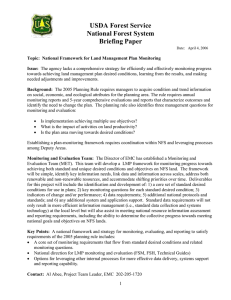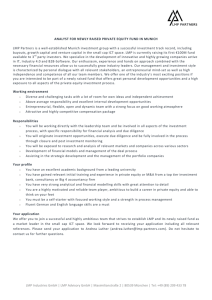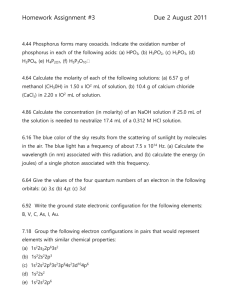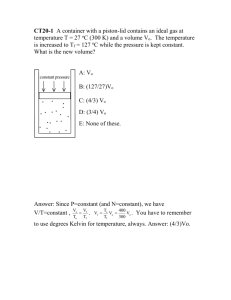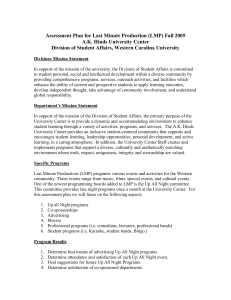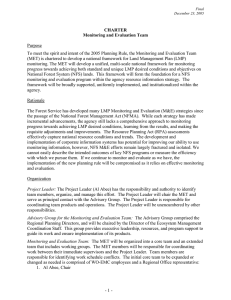Appendix 10: Frequently Asked Questions
advertisement
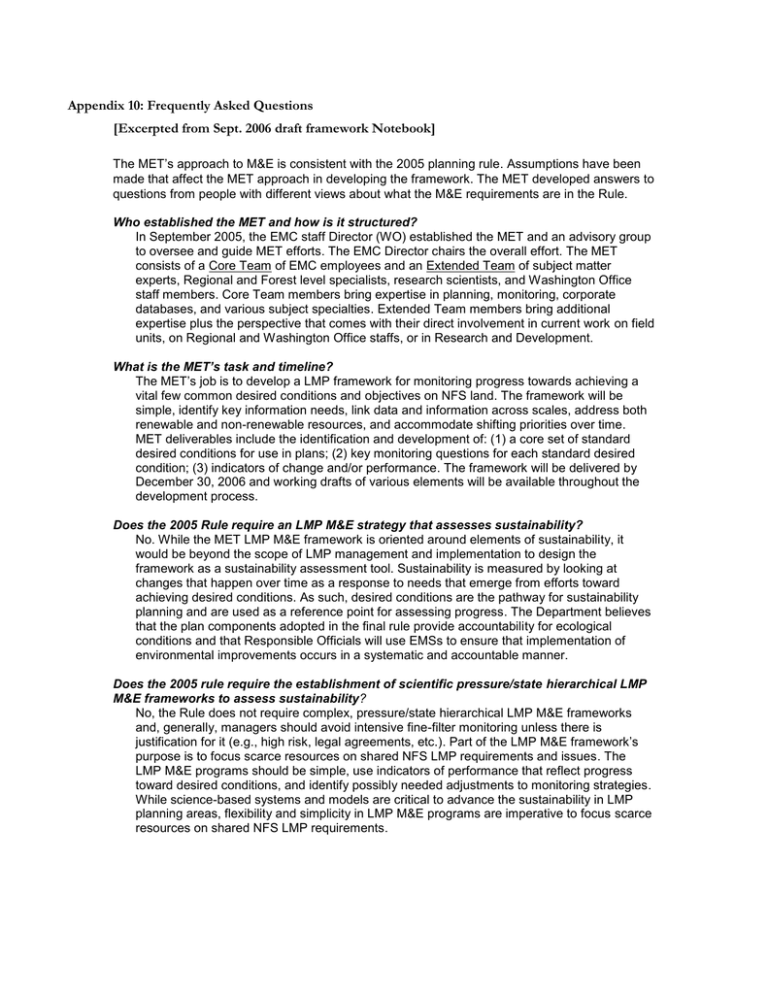
Appendix 10: Frequently Asked Questions
[Excerpted from Sept. 2006 draft framework Notebook]
The MET’s approach to M&E is consistent with the 2005 planning rule. Assumptions have been
made that affect the MET approach in developing the framework. The MET developed answers to
questions from people with different views about what the M&E requirements are in the Rule.
Who established the MET and how is it structured?
In September 2005, the EMC staff Director (WO) established the MET and an advisory group
to oversee and guide MET efforts. The EMC Director chairs the overall effort. The MET
consists of a Core Team of EMC employees and an Extended Team of subject matter
experts, Regional and Forest level specialists, research scientists, and Washington Office
staff members. Core Team members bring expertise in planning, monitoring, corporate
databases, and various subject specialties. Extended Team members bring additional
expertise plus the perspective that comes with their direct involvement in current work on field
units, on Regional and Washington Office staffs, or in Research and Development.
What is the MET’s task and timeline?
The MET’s job is to develop a LMP framework for monitoring progress towards achieving a
vital few common desired conditions and objectives on NFS land. The framework will be
simple, identify key information needs, link data and information across scales, address both
renewable and non-renewable resources, and accommodate shifting priorities over time.
MET deliverables include the identification and development of: (1) a core set of standard
desired conditions for use in plans; (2) key monitoring questions for each standard desired
condition; (3) indicators of change and/or performance. The framework will be delivered by
December 30, 2006 and working drafts of various elements will be available throughout the
development process.
Does the 2005 Rule require an LMP M&E strategy that assesses sustainability?
No. While the MET LMP M&E framework is oriented around elements of sustainability, it
would be beyond the scope of LMP management and implementation to design the
framework as a sustainability assessment tool. Sustainability is measured by looking at
changes that happen over time as a response to needs that emerge from efforts toward
achieving desired conditions. As such, desired conditions are the pathway for sustainability
planning and are used as a reference point for assessing progress. The Department believes
that the plan components adopted in the final rule provide accountability for ecological
conditions and that Responsible Officials will use EMSs to ensure that implementation of
environmental improvements occurs in a systematic and accountable manner.
Does the 2005 rule require the establishment of scientific pressure/state hierarchical LMP
M&E frameworks to assess sustainability?
No, the Rule does not require complex, pressure/state hierarchical LMP M&E frameworks
and, generally, managers should avoid intensive fine-filter monitoring unless there is
justification for it (e.g., high risk, legal agreements, etc.). Part of the LMP M&E framework’s
purpose is to focus scarce resources on shared NFS LMP requirements and issues. The
LMP M&E programs should be simple, use indicators of performance that reflect progress
toward desired conditions, and identify possibly needed adjustments to monitoring strategies.
While science-based systems and models are critical to advance the sustainability in LMP
planning areas, flexibility and simplicity in LMP M&E programs are imperative to focus scarce
resources on shared NFS LMP requirements.
Will the MET framework deal with the need for 'place-based' specificity in the development
of standard desired conditions?
Yes, the framework enables place-based specificity. The MET challenge includes enabling
revelations of place-based specificity without losing the broader National Forest System
(NFS) legal and institutional context. The MET Monitoring and Evaluation Framework is a
hierarchical dichotomy. The themes and related sub-element desired conditions the MET is
proposing are 'timeless' and flow from the rule and related directives ('must and shall' things
applicable to the LMP area). While the rule and embedded body of legislation identify in
general what is to be achieved on NFS land (multiple use, clean water, clean air, T&E, etc),
and while 'strategic' trends, in the general sense, are implicit in the Rule (we want to maintain
water quality or improve it as appropriate, etc.), the 'on the ground specifics' for such cannot
be prescribed. Desired condition statements need enough specificity to enable related
development of detailed objectives and strategies designed to guide project level work to
make progress. As the Rule states, most specificity should be in objectives: "Objectives are
concise projections of measurable, time specific intended outcomes. The objectives for a plan
are the means of measuring progress toward achieving or maintaining desired conditions.”
Several illustrations have been developed to show how a Responsible Official might use MET
sub-elements as the basis for LMP desired conditions.
Is the MET strategy a ‘top-down’ model intended for ‘rolling up’ information to higher
organizational levels as a form of upward reporting?
No, the MET strategy is not a top-down model designed for upward reporting. The MET effort
is aimed at providing a framework that, first, meets LMP monitoring needs under the 2005
Rule and that, because of careful thought, responds to challenges relevant at both Regional
and National organizational levels. By using broadly accepted and agreed upon LMP
performance measures, supported by corporate data systems, the MET strategy will enable
some capacity to ‘roll up’ information while concurrently meeting LMP needs. For example,
the 2005 Rule requires that NFS lands ‘contribute’ to sustaining social and economic systems
within the plan area and that LMPs provide a framework for those ‘contributions.’
Accordingly, an LMP’s context is as important as its content. Characterizing LMP unit
contributions to the sustainability of the social, economic, and ecological system in the plan
area requires analysis at multiple scales, especially when shared social, economic, and
ecological issues cross multiple ownerships or the issues are landscape-scale. Working with
partners is easier with common performance measures supported by corporate data systems
because those allow better communication and some ‘rolling up’ of information while meeting
LMP monitoring needs. Common measures supported in corporate databases also will
facilitate regional and local augmentation of agency-wide protocols or intensification of
sampling frames because those measures respond to local, regional, and national monitoring
questions. Nevertheless, a ‘top-down’ model intended for ‘rolling up’ information is not a MET
goal.
How will the MET effort add value to Land Management Planning on National Forests and
National Grasslands?
This work will provide the agency with a comprehensive strategy for efficiently and effectively
meeting the monitoring obligations of the 2005 Planning Rule (36 CRF 219). The strategy will
add value by clarifying and simplifying our monitoring expectations in response to field-level
planning needs heard directly from Responsible Officials involved in LMP revision and by
integrating lessons already learned. Additionally, the social, economic, and environmental
issues, more often than not, cross multiple jurisdictions. Instead of every LMP effort
developing a framework independently, managers can adapt the MET framework to
accommodate unit-level planning concerns. The unifying framework will provide consistency
and still enable local flexibility so that each unit can more directly contribute to telling multiscale stories. The unifying framework, together with common LMP desired conditions, will
produce budget savings and savings of increasingly limited time and personnel resources
during planning and subsequent monitoring work.
What field-level needs have the MET members already heard are important to address?
The MET effort has been listening to concerns from all agency levels. Several questions
currently appear most relevant to field-related work. One is the need to clarify ways in which
monitoring might contribute to evaluating whether there is a need for change in a Land
Management Plan. A second is to consider options for data delivery and reporting on LMP
issues common throughout the NFS. For example, could NFS 5-year LMP evaluation report
requirements be partially satisfied through embellished 5 year RPA updates for shared NFS
issues? And a third is to describe linkages between the MET framework and Environmental
Management System (EMS).
Is the MET strategy going to add any expectations on top of current monitoring work?
No, the MET strategy will not add additional monitoring expectations. Instead, it will organize,
clarify, and simplify relationships between other agency monitoring work and LMP M&E work.
By clarifying those expectations, the MET strategy will provide the basis for focusing and
rethinking our monitoring work. It is hoped that the MET effort will enable focusing scarce
resources on the most important vital few things that concern managers. We believe these
will save time and money and better meet the requirements of the 2005 rule.
Will the MET strategy prescribe a ‘single best measure’ of anything?
Yes, those LMP issues common to the NFS and noted as an agency-wide priority or
requirement may be incorporated into affected LMP’s as desired conditions and related
monitoring questions. However, Responsible Officials retain the discretion and flexibility to
augment and embellish respective UNIT M&E as needed to accomplish adaptive
management and to meet localized needs.
Will the MET provide interim products?
Yes, the MET will share interim draft products to ensure that the products meet agency needs
and that reviewers believe the products will work. Already, the MET has produced an initial
framework based upon the 2005 planning rule, examples from National Forests and
Grasslands, feedback from Regional and National staff areas, and review of similar efforts
outside the agency. The framework has six themes that appear common across NFS units:
(1) biological diversity; (2) land health; (3) soil, water, and air resources; (4) social benefits (5)
economic benefits (6) infrastructure capacity. Based on a review of the Directives and
feedback from the field, two or three sub-elements under each of the six themes have
surfaced and the MET framework reflects nine identified sub-element priorities: (a)
ecosystem diversity, (b) species diversity, (c) invasive species, (d) resilience to fire
disturbance, (e) watershed health, (f) diversity of opportunities and settings, (g) native insects
and pathogens and (h) provision of goods and services (i) roads and trails.
What are the MET’s biggest questions now?
Given the nine common desired conditions and proposed monitoring questions developed,
we need to do a proof-of-concept involving broader internal and external review and
affirmation of the framework. We would like to know if the framework adds the value
intended. And, we would like to know how we can best involve and communicate with those
who want to engage further in this effort.
